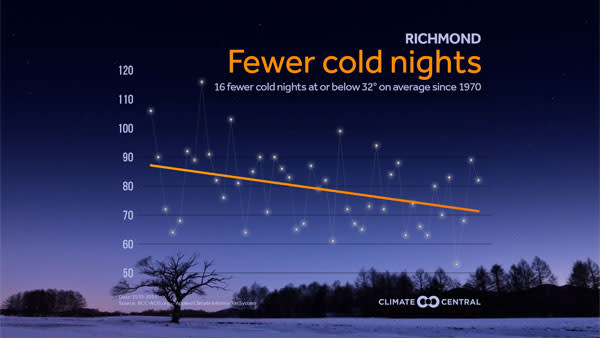For much of the country, winter is the fastest warming of the four seasons. Not surprisingly, the average number of especially cold nights during the year is on the decline. Trends are not exactly the same in every location, but overall, the amount of cold is starting to wane.
In this analysis, we examined the number of nights below 32°F for our Climate Matters locations across the country. However, in warmer climates where temperatures below freezing are not common, we used a threshold of 40°F or 45°F to establish a trend.
As the amount of greenhouse gases from the burning of fossil fuels continues to grow, winters are warming and we expect a continued drop in very cold nights. Some of the biggest drops in the number of cold nights have come in the Intermountain West, where Las Vegas has seen 7.1 fewer nights below freezing per decade, and Albuquerque is losing 10.1 nights below freezing per decade. While in Phoenix, where cold is much more relative, the number of nights below 40°F is also decreasing at a rate of 7.8 nights each decade.
While fewer colder nights may sound good, it comes with consequences to the economy and the ecosystem. In many regions, the lack of cold will likely allow more insects to survive the winter season, worsening their damage to forests and presenting new challenges for agriculture. In addition, winter sports enthusiasts may find snow skiing and outdoor ice hockey a bit more difficult to come by.
